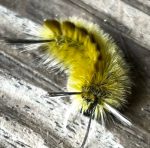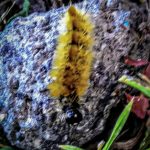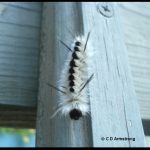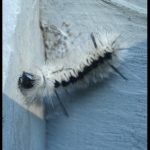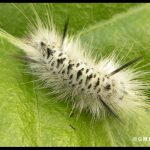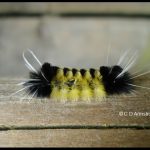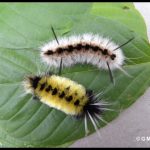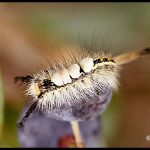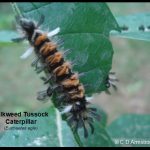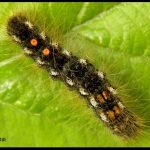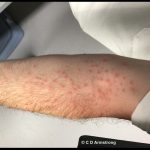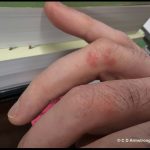Tussock Caterpillars
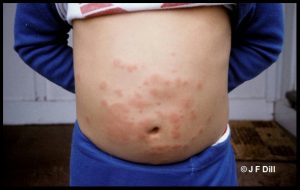
Tussock caterpillars, most of which belong to the Lymantriinae subfamily within the Erebidae family of moths, are sometimes very abundant in Maine. They are very good at ‘itching’ for attention! One reason for all the attention they receive (during late summer and early fall) is that, unfortunately, the hairs on these caterpillars can cause a very itchy rash. The prickly hairs are a defense mechanism (the hairs are not poisonous or venomous). It is important to note that children are more susceptible to the rash than are adults, and children are also much more likely to be playing with them and handling these showy critters (natural curiosity/fascination/playing outdoors). The rash from some of the members of this group tends to be short-lived, and clears up on its own after two or three hours. For other species, however, such as with the Hickory Tussock (subfamily Arctiinae) or the dreaded Browntail caterpillars, the rash can be much more severe and long-lasting, and a doctor’s visit might be warranted to speed one’s recovery and ease the symptoms/discomfort.
Note: The Browntail Moth, Euproctis chrysorrhoea, is a member of the same large family to which tussock caterpillars belong–Erebidae family–and is also in the same subfamily as most of the tussocks: Lymantriinae.
Some examples of Tussock Caterpillars found in Maine (The hairs from many members of this group may cause an itchy rash):
- Banded Tussock (Halysidota tessellaris) (Hollis, ME; 9/8/2023) (Photo courtesy of Elizabeth Saunders)
- Banded Tussock (most of the long hairs on this specimen have broken off; it’s a defensive adaptation) (9/3/2020; Farmington, ME; photo courtesy of Hannah A.)
- Hickory Tussock (the hairs on many tussock caterpillars can cause an itchy rash)
- Hickory Tussock (Lophocampa caryae) (Etna, ME; 9/3/2009)
- Hickory Tussock (Lophocampa caryae)
- Spotted Tussock
- Tussock caterpillars: Hickory Tussock (top) and Spotted Tussock (bottom).
- White-marked Tussock Caterpillar (feeding on lowbush blueberry)
- Milkweed Tussock
- Browntail Moth (late instar caterpillar stage)
- Example of a typical reaction to the Browntail caterpillar hairs on a person’s arm. July 12th, 2021.
- Example of an unfortunate reaction to the Browntail caterpillar hairs on a person’s fingers. May 23rd, 2022.
- An example of a bad case of the skin rash that the hairs from the browntail caterpillars–and later on their cocoons–can cause. Staff Photo, taken 5/26/21.
Additional Information and Photos:
- Banded Tussock (BugGuide.net)
- Spotted Tussock (BugGuide.net)
- Hickory Tussock
- Milkweed Tussock (BugGuide.net)
- White-marked Tussock (BugGuide.net)
- Browntail Moth (same family and subfamily to which most tussock caterpillars belong)

